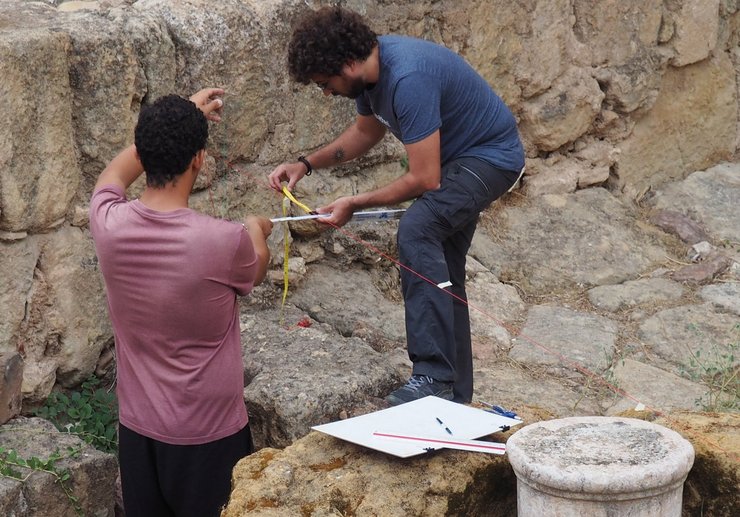Jetzt bewerben: Bauaufnahmekurs in Centcelles (Spanien)

Bauaufnahme für Archäolog:innen: Ein Aufbaukurs in Centcelles (Tarragona, Spanien)
Auf archäologischen Ausgrabungen zählen Überreste von Gebäuden zu den häufigsten Funden. Sie sind eine kulturhistorische Quelle von herausragender Bedeutung, denn sie geben komplexe Einblicke, wie vergangene Gesellschaften ihre Umwelt aktiv gestalteten und ihr Zusammenleben organisierten. Dokumentation und Beurteilung architektonischer Befunde stellen Archäolog:innen jedoch vor besondere Herausforderungen:
An vielen Universitäten sind die Verfahren der fachgerechten Dokumentation und Analyse von baulichen Überresten nicht Teil der regulären Archäologieausbildung, und darin erfahrene Architekt:innen fehlen häufig im Grabungsteam. Die Abteilung Madrid des DAI bietet daher Archäolog:innen einen Aufbaukurs in Bauaufnahme und Bauanalyse an. Im Rahmen einer Übung an der Welterbestätte Centcelles bei Tarragona werden den teilnehmenden Archäolog:innen die Grundlagen der Dokumentation, Beschreibung und Analyse von Bauwerken vermittelt, um sie für die Eigenheiten und Chancen der Bauforschung zu sensibilisieren.
Zeichnen ist denken. Auch in einer Zeit, in der Structure-from-Motion und Laserscanning-Verfahren die Dokumentation dreidimensionaler Befunde stark vereinfacht hat, bleibt der Zeichenstift das wichtigste Instrument, um bauforscherische Beobachtungen festzuhalten. Die präzise Erfassung des Bestandes als Bauaufnahmezeichnung bildet die Grundlagen für eine Interpretation und Analyse von Bauwerken. Der Schwerpunkt des Kurses liegt daher auf dem traditionellen Handaufmaß.
Der Kurs richtet sich an Archäolog:innen und Archäologiestudent:innen im Masterstudium und Doktorand:innen aus Europa und Nordafrika. Voraussetzung für die Teilnahme sind erste Grabungserfahrungen und Zeichenfähigkeiten. Die Kurssprache ist Englisch. Das DAI übernimmt die Kosten der Kursteilnehmer:innen für die Anreise sowie die Unterkunft in Tarragona.
Leitung: Dr. habil. Felix Arnold (DAI Madrid) und Dr.-Ing. Heike Lehmann (TU Berlin), in Zusammenarbeit mit Dr. Josep Anton Remolà Vallverdú (Archäologisches Nationalmuseum Tarragona)
Zeitraum: Anreise 4. September, Abreise 12. September 2024
Die Teilnehmerzahl ist auf 10 limitiert. Bitte richten Sie Ihre Bewerbungen mit Motivationsschreiben, Lebenslauf und einem Empfehlungsschreiben bis zum 7. April 2024 an: sekretariat.madrid@dainst.de
Documentation of architectural remains: A training course for archaeologists in Centcelles (Tarragona, Spain)
On archaeological excavations, remains of buildings are among the most frequent finds. They are a cultural-historical source of outstanding importance, because they provide complex insights into how past societies actively shaped their environment and organized their coexistence. However, the documentation and evaluation of architectural features pose special challenges to archaeologists:
At many departments of archaeology, the documentation and analysis of architectural remains are not part of the regular curriculum. However, trained architects are often not part of an excavation team. The Madrid Department of the German Archaeological Institute therefore offers archaeologists an advanced course in the documentation of architectural remains. As part of an exercise at the World Heritage site Centcelles (Tarragona), archaeologists are taught the basics of documenting, describing and analyzing buildings, with the aim of raising awareness for the particular challenges and opportunities of architectural research.
Drawing is thinking. Even at a time when Structure-from-Motion and laser scanning techniques have greatly simplified the documentation of three-dimensional objects, the drawing pencil remains the most important instrument for recording observations in building research. A precise documentation in the form of drawings is still the basis for the interpretation and analysis of buildings. The focus of the course is therefore on traditional methods of documentation by hand.
The course is aimed at archaeologists and archaeology students in the master's program and doctoral students from Europe and North Africa, with excavation experience and drawing skills. The course language is English. The German Archaeological Institute covers the course participants' travel expenses as well as accommodation in Tarragona.
The course is directed by Dr. Felix Arnold (DAI Madrid) and Dr. Heike Lehmann (Technical University of Berlin), in collaboration with Dr. Josep Anton Remolà Vallverdú (National Archaeological Museum of Tarragona)
Date: arrival 4 September, departure 12 September 2024
The number of participants is limited to 10. Please send your applications with motivation letter, CV and a letter of recommendation by 7 April 2024 to: sekretariat.madrid@dainst.de
Documentación de arquitectura: Un curso para arqueólogos en Centcelles (Tarragona)
Durante las excavaciones arqueológicas, los restos de edificios son uno de los hallazgos más frecuentes. Constituyen una fuente histórico-cultural de gran importancia, ya que proporcionan una visión compleja de cómo las sociedades del pasado configuraron activamente su entorno y organizaron su convivencia. Sin embargo, la documentación y la evaluación de los elementos arquitectónicos plantean retos especiales a los arqueólogos:
En muchas universidades, los procedimientos de documentación y análisis de los restos arquitectónicos no forman parte de la formación de los arqueólogos. Además, generalmente arquitectos cualificados no forman parte de un equipo de excavación. Por lo tanto, el Departamento de Madrid del Instituto Arqueológico Alemán ofrece un curso en la documentación de arquitectura para arqueólogos. En el marco de un ejercicio práctico en Centcelles (Tarragona), se enseña a los arqueólogos las bases de la documentación, descripción y análisis de restos arquitectónicos para sensibilizarlos a las peculiaridades y oportunidades de las investigaciones arquitectónicas.
Dibujar es pensar. Incluso en una época en la que las tecinas de structure-from-motion y de escaneado láser han simplificado en gran medida la documentación de hallazgos tridimensionales, el lápiz de dibujo sigue siendo el instrumento más importante con el que un investigador registra sus observaciones. Una documentación precisa en forma de dibujos sigue siendo la base para la interpretación y el análisis de los edificios. Por lo tanto, el curso se centra en los métodos de documentación manual.
El curso está dirigido a arqueólogos y estudiantes de arqueología en el programa de master y doctorandos de Europa y el norte de África, con experiencia de excavación y con una aptitud para dibujar. El idioma del curso es inglés. El Instituto Arqueológico Alemán cubre los gastos de viaje de los participantes, así como el alojamiento en Tarragona.
Dirección: Dr. Felix Arnold (IAA Madrid) y Dr. Heike Lehmann (Universidad de Berlín), en colaboración con Dr. Josep Anton Remolà Vallverdú (Museo Arqueológico Nacional de Tarragona)
Periodo: llegada el 4 de septiembre, salida el 12 de septiembre 2024
El número de participantes está limitado a 10. Por favor, envíen su candidatura con carta de motivación, CV y una carta de recomendación antes del 7 de abril de 2024 a: sekretariat.madrid@dainst.de
Kontakt
Dr. habil.
Felix Arnold
, Wissenschaftlicher Direktor Abteilung Madrid
Felix.Arnold@dainst.de
DAI Pressestelle
Podbielskiallee 69
14195 Berlin
Tel.: +49 (0)30 187711-120
Mail: presse@dainst.de
Partner

Museo Nacional Arqueológico de Tarragona

